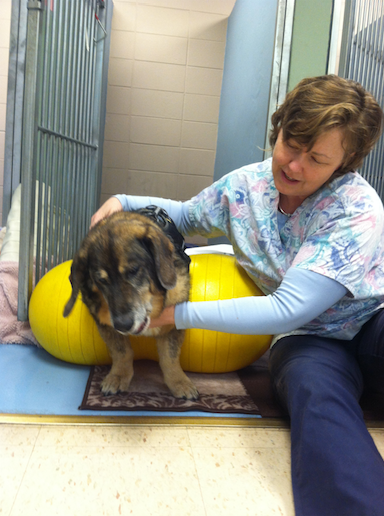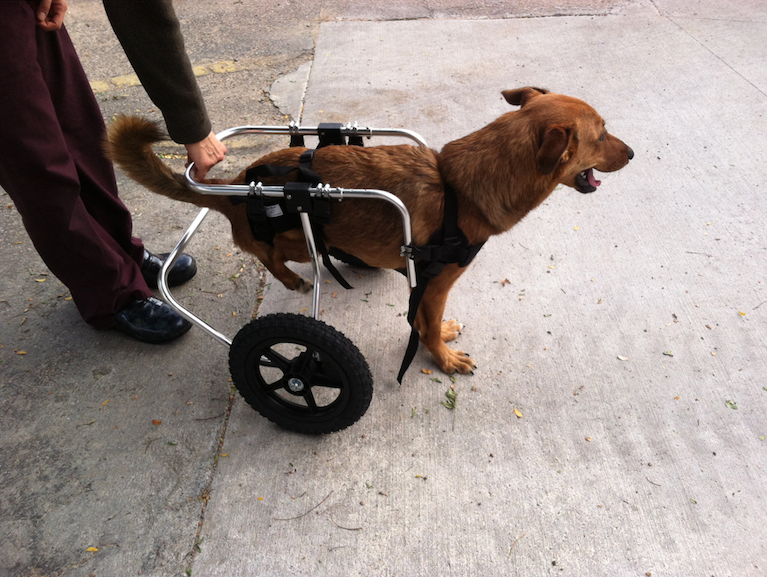IVECCS 2017: Physical Medicine in Companion Animals
Thermotherapy and mechanical pressure techniques—with or without pharmacologic aids—can reduce pain in emergency and intensive care unit patients.

Physical medicine, which uses the body’s physiology to facilitate healing, is gaining attention in the veterinary world. According to Bonnie Wright, DVM, DACVAA, this nonpharmacologic approach complements Western medicine’s pharmacologic-based therapies. In fact, physical medicine helps when pharmacologic options are limited, said Dr. Wright, who lectured at the 2017 International Veterinary Emergency and Critical Care Symposium in Nashville. Physical medicine can be especially helpful for relieving pain, which is very common in veterinary critical care patients. Uncontrolled pain has several negative consequences, including poor wound healing and immunosuppression.
Pharmacologic solutions for pain control include opioids, nonsteroidal inflammatory drugs, and local anesthetics. However, because opioids can produce dysphoria and hyperalgesia, there is increased interest in using physical medicine to relieve the pain of patients in veterinary emergency departments and intensive care units. Dr. Wright, an integrative pain management specialist and owner of Mistral Vet in Colorado Springs and Fort Collins, Colorado, described physical medicine tools available in veterinary medicine to relieve pain and promote healing.
RELATED:
- What is Physical Medicine?
- Controversies with Physical Medicine
Temperature-Related Modalities
Cryotherapy
Cold temperature reduces swelling, inflammation, and—because it decreases the rate at which muscle fibers fire—spasms. Cryotherapy also slows local metabolism and reduces vascular permeability, and it activates TRPM8 receptors, which are present on afferent nerve endings and are sensitive to cold.
Indications for cryotherapy include relief of acute pain, such as from an injury or after surgery. Throughout rehabilitation, cryotherapy can be used to reduce postexercise inflammation and stimulate activity in flaccid, hypotonic muscles.
Dr. Wright provided several tips for using cryotherapy tools, such as ice packs and small paper cups filled with crushed ice:Repeat cryotherapy every 4 to 6 hours.
- Apply tools cautiously in areas of thin skin or poor circulation.
- Use cryotherapy for 10 to 20 minutes for superficial tissues (1-2 cm deep) and up to 30 minutes for deeper tissues (2-4 cm).
To engage flaccid muscles in a dog, Dr. Wright suggested having the dog stand in a tray of ice cubes and water while someone rubs ice and water along its legs.
Heat
Heat therapy can be useful after day 3 of an injury and for problems such as chronic pain and edema without intrinsic heat. It improves healing by increasing circulation, relaxing muscles, and improving flexibility. Importantly, heat can also help relax anxious dogs.
Tools for heat therapy include rice packs, hot water bottles, clay packs, and hydrocollators. Dr. Wright recommended using tools that cool slowly, applying heat in 15- to 30-minute intervals, monitoring continuously, and protecting the skin with insulating material.
Mechanical Pressure Modalities
Mechanical pressure deforms body tissue, which stimulates healing by releasing growth factors, proteins, and neurotransmitters. Physical medicine modalities that involve the use of mechanical pressure include acupuncture, electrical stimulation, and exercise.
Acupuncture
By locally engaging muscles and fascia, acupuncture relieves pain, Dr. Wright said. It also interacts with the central nervous system to influence the release of neurotransmitters involved in pain modulation (eg, gamma-aminobutyric acid, cannabinoid, and glutamate). In addition, acupuncture modulates blood flow and immune function.
The paraspinal area is particularly important for acupuncture needle placement, because it is the exit point for many spinal nerves. Other acupuncture points for pain relief include the Golgi tendon organs and muscle spindle insertions.
Dr. Wright emphasized that acupuncture, and physical medicine in general, is most effective when it is applied bilaterally. Although there is a tendency for practitioners to treat only the injured side, she said, “patients tend to respond better when treatment is bilateral.” Veterinarians need not be hesitant to use acupuncture, she added, because it is largely about “honoring anatomy and not putting a needle where you shouldn’t.”
Electrical Stimulation
Through neuromodulation, electrical stimulation can help relieve pain and improve muscle strength and function. Electroacupuncture, for example, sends an electric current through pairs of acupuncture needles and is useful for relieving pain from spinal cord injuries. Transcutaneous electrical nerve stimulation (TENS) works similarly to reduce pain. Neuromuscular electrical stimulation (NMES) produces involuntary muscle contractions that facilitate muscle healing and pain relief. A patient’s hair should be shaved to ensure proper pad placement for this therapy, Dr. Wright said.
One notable difference between these treatments, according to Dr. Wright: Electroacupuncture can target myofascial trigger points, which are hypersensitive and taut areas of muscle that can cause extreme pain, but NMES and TENS cannot.
Exercise
Another important mechanical pressure tool, exercise can reduce pain and stress as well as improve treatment outcome. Therapeutic exercise includes balancing, weight shifting, muscle strengthening, and gait training. When started soon after injury, exercise can break the cycle of disability that includes pain, atrophy, and instability.
Stretching should be done after exercise, when the muscles are warmed up, Dr. Wright noted. Stretching before exercise, which was previously recommended, can decrease performance and increase the risk of trauma.
Proper practice is essential, Dr. Wright emphasized. “Whatever you practice in the injured animal will be what you get in the long term,” she said. This is particularly important when reeducating a dog on normal posture. For example, an injured dog that learns to drag its back limbs when using a wheelchair will continue to move that way after the rehabilitation period.

Dr. Wright makes these recommendations for exercise:
- Choose exercises within the patient’s comfort zone.
- Continually challenge the patient with new exercises.
- Begin therapeutic exercise after pain is under control.
- Adapt the regimen according to factors such as owner schedule and lifestyle.
Mechanical pressure is also useful for managing gastrointestinal motility problems that can result from pharmacologic pain control in veterinary critical care patients. Physical medicine techniques such as abdominal massage after surgical deobstipation, as well as exercise, can stimulate and manage motility.
Other forms of physical medicine include therapeutic lasers and stem cell therapy, which are not commonly used in veterinary emergency medicine but are worth knowing about, Dr. Wright noted.
Mastering Physical Medicine
Because veterinarians often feel overwhelmed when considering physical medicine tools, Dr. Wright suggested beginning with 1 tool and seeing how it works. Gaining physical medicine expertise can take 10 to 15 years, Dr. Wright said. She advised veterinarians to learn as they go, rather than wait to master all the skills.
Dr. Pendergrass received her DVM from the Virginia-Maryland College of Veterinary Medicine and completed a postdoctoral fellowship at Emory University’s Yerkes National Primate Research Center. She is the founder and owner of JPen Communications, LLC, a medical communications company.
